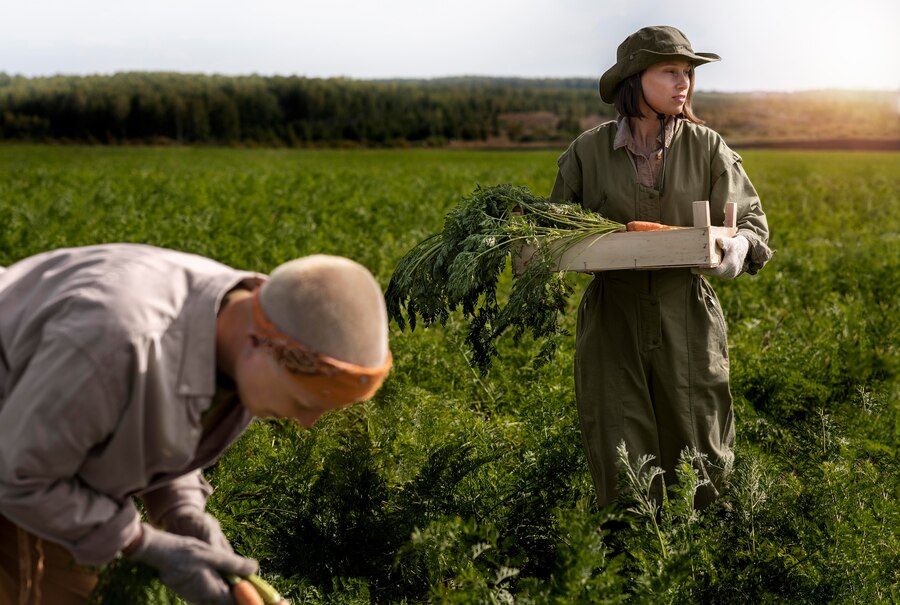Over five decades, the Game & Wildlife Conservation Trust (GWCT) has been meticulously studying the effects of agricultural practices on invertebrate populations in the UK. This Sussex Study, the longest-running scientific investigation into the cereal ecosystem, has recently unveiled a startling statistic: invertebrate abundance has plummeted by 37% since the study’s inception in 1970. Agricultural Changes on UK Invertebrates
The Sussex Study: A Five-Decade Overview
The Sussex Study, launched in 1970 by the GWCT, stands as a monumental effort in environmental research. It is unique in its approach, consistently sampling invertebrates from the same farmland areas, at same times each year, and using uniform methods throughout its duration. This consistency allows for a reliable long-term dataset, reflecting changes in invertebrate populations with remarkable accuracy. Agricultural Changes on UK Invertebrates

The study focuses on cereal fields, which are crucial for understanding the broader impacts of agricultural practices on ecosystems. Over the years, the Sussex Study has meticulously mapped changes in farming practices, such as crop rotation, field sizes, and pesticide usage. These factors, along with overarching issue of climate change, have been identified as major drivers behind the fluctuations in invertebrate populations. Agricultural Changes on UK Invertebrates
The Findings: A 37% Decline
The data collected up until 2019 revealed a sobering decline in invertebrate abundance. Specifically, the study documented a 37% drop in the overall number of invertebrates. This decline is not uniform across all species. Beneficial predators such as ground beetles and ladybirds saw their numbers fall dramatically—by 80% and 78% respectively. Aphid populations, which are a crucial food source for many invertebrates, decreased by a staggering 90%.
Interestingly, there was no significant change in the number of pollinators like bees, likely because these species are less commonly found in cereal fields. However, the overall reduction in invertebrates is concerning, especially given the role these creatures play in ecosystems.
One of the most troubling discoveries from the study is the significant decline in invertebrate groups that serve as food for farmland birds. Between 50% and 80% of several key invertebrate groups experienced reductions. This decline has serious implications for bird species that rely on these insects during their early developmental stages. This loss is closely tied to the decrease in available food sources for bird chicks.
The Role of Agricultural Practices
Steve Moreby, a senior entomologist at the GWCT who joined the Sussex Study team in 1983, sheds light on the impact of agricultural practices on these trends. According to Moreby, while insecticide use has decreased over the past 15 years, herbicide usage has continued to rise.
This shift has contributed to a decline in so-called “chick food” insects, which in turn affects red-listed bird species such as the partridge, skylark, and yellowhammer.
The GWCT’s research highlights that changes in farming practices, including increased use of herbicides and altered crop management techniques, are significant contributors to the decline in invertebrate populations.
Seeking Solutions: The GWCT’s Approach
Recognizing the severity of the issue, GWCT has been proactive in seeking solutions to mitigate the decline in invertebrate populations. The Trust has developed a range of practical measures aimed at improving biodiversity while maintaining agricultural productivity. These measures are detailed in the newly published “Guide to Insect-Rich Farmland Habitats.”
One of the key strategies involves working closely with farmers and land managers to implement agri-environment schemes. These schemes offer various options for enhancing biodiversity on farmland, such as creating conservation headlands, grass margins, and reducing insecticide use. Remarkably, farms that have adopted these practices have successfully doubled their songbird populations while maintaining their productivity.

Dr. Julie Ewald, who co-authored a recent peer-reviewed paper on the Sussex Study, emphasizes the importance of supporting farmers in their efforts to implement these measures. She acknowledges that farmers cannot be blamed for the broader trends of agricultural intensification, which have been driven by the need to produce more food in a global marketplace with rising costs. Instead, the focus should be on providing farmers with the tools and resources needed to balance productivity with environmental stewardship.
Integrated Pest Management: A Path Forward
The GWCT has been at the forefront of developing Integrated Pest Management (IPM) strategies. IPM is a holistic approach that aims to reduce pesticide use by combining various methods, including efficient application techniques and the creation of habitats for beneficial invertebrates.
For example, promoting the presence of ladybirds and spiders, which prey on harmful pests, can help control pest populations without relying heavily on chemical pesticides.
The new Guide to Insect-Rich Farmland Habitats outlines several IPM practices Agri-environment options that can help farmers increase invertebrate populations on their land. These practices are informed by research from the Allerton Project, the GWCT’s demonstration farm in Leicestershire.
Conclusion: The Sussex Study’s findings underscore a critical issue facing modern agriculture: dramatic decline in invertebrate populations and its cascading effects on ecosystems. As the data reveals, the decline is linked to changes in farming practices and broader environmental shifts. However, the GWCT’s proactive approach to finding solutions offers hope. By working with farmers to implement agri-environment schemes and embracing Integrated Pest Management, it is possible to reverse some of the damage and promote a more balanced and sustainable agricultural system.
The road ahead requires continued collaboration between researchers, farmers, and policymakers. It is essential to support and fund initiatives that aim to restore biodiversity create a resilient ecosystem can support both agriculture and wildlife. Through these efforts, we can work towards a future where farmland continues to be productive while also nurturing the rich diversity of life that depends on it.

Disclaimer
The information provided in this blog post is based on data the Game & Wildlife Conservation Trust’s Sussex Study and other related research. While effort has been made to ensure accuracy, content is intended for general informational purposes and should not be considered as professional advice. For specific guidance related to agricultural practices and conservation measures, please consult relevant experts or authorities in the field.
Source: farming.co.uk
- Cost of MBA in Abroad: Detailed Guide for USA, UK, Australia, Europe, China, and Asia
- Canada Citizenship Requirements: Everything You Need to Know
- Canada’s New Visa Rules: What It Means for Indian Students
Get Free Expert Advice:
Are you ready to embark on your next adventure? Whether you’re seeking a work permit, tourist visa, or study opportunities in Canada or other countries, we’re here to help! Contact us today to learn how our expert services can simplify your journey and turn your dreams into reality. Reach out now and let’s start planning your future together!
Also read:
- UK Lottery Visa: Your Ultimate Guide to Winning and Applying
- A Bright Future Awaits Nigeria: Insights from Julie Campbell, UK-based Educationist
- Is Travel to Brazil Safe for Tourists? Visa-Free Travel, Airline Connectivity, Top Tourist Attractions, and Latest Travel News
- Your Ultimate Guide to Applying for a Singapore Tourist Visa
- Luxembourg Work Visa for Indian Citizens: A Comprehensive Guide









